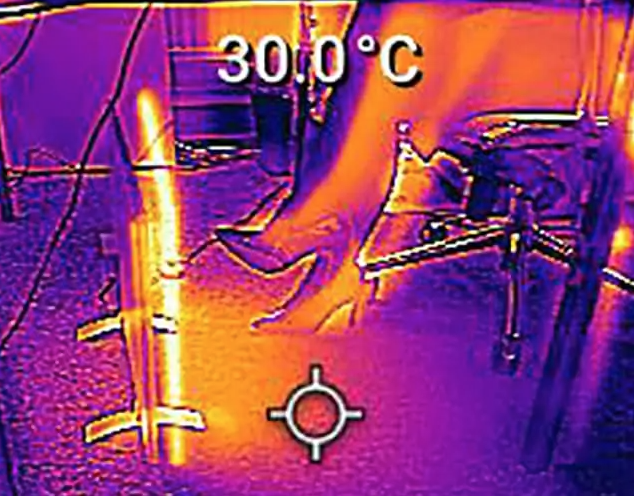
What is Comfort Heat?


It is generally accepted that the ideal comfort temperature to create “Comfort Heat” for the average human is in the region of 21 degrees centigrade. This assumes the person is non-active, in an enclosed environment and wearing everyday clothes.
For example: Watching TV in a living room, eating supper in a dining room, or working in an office. The ideal comfort heat for sleeping is lower at around 18.5 degrees C, although we are OK at lower temperatures snuggled under the duvet.
In a conventional heating situation, the air temperature in the room is 21 degrees C which is great, and you are sitting in an armchair 1.5 meters from an outside wall which has a temperature of 15 degrees C.
The air temperature is 21 degrees C, but of greater influence is the wall temperature of 15 degrees C. Your body heat will radiate out from you to the cold wall, resulting in your body feeling cold. This is because all objects (including humans and animals) absorb and radiate heat, and “emission” always flows from Hot to Cold. We feel absorption of heat as warming, and loss of heat as cooling.

Humans tolerate up to 5 degrees radiant heat difference under or over their ideal comfort heat temperature and still feel comfortable. Beyond 5 degrees, people feel uncomfortable and add or remove clothes, increase/reduce levels of activity, and change the air temperature via heating or opening the window.
There is still the issue of the radiant temperature imbalance between the person and the environment, eg, the cold wall. Cavity wall insulation or dry lining would raise the wall temperature but this is not always possible or economical. Layering clothes or doing exercise is good but not ideal when working in an office or watching TV. Ramping up the Central Heating thermostat warms the air. But, at the cost of heating the whole property and with the inevitable time lag.
The conventional convection & plumbed CH systems will eventually warm the wall but this will take days at an excessive expenditure of energy and £’s. This is because these systems actually radiate small amounts of heat relative to the emission of energy into the air. Heating systems that heat the objects in the environment (walls, ceiling, furniture, humans etc) positively radiate heat address this problem. This raises the radiant temperature of the room as a whole and not just the air!
Far Infrared or Longwave is the ideal type of infrared heating for people in buildings to reach Comfort Heat. It’s part of the infrared wavelength spectrum where the water begins to absorb heat well for minimum energy. The skin’s surface easily absorbs this heat. Warmth is transported around the body and readily absorbed via conduction into the tissue and blood, See Wave Length Analysis.
To conclude, to best achieve Comfort Heat then far-infrared radiant heating is the ideal system for you. When the RH system is operated via Smart Controls with individual heater thermostats, each room will be kept at the perfect temperature.

